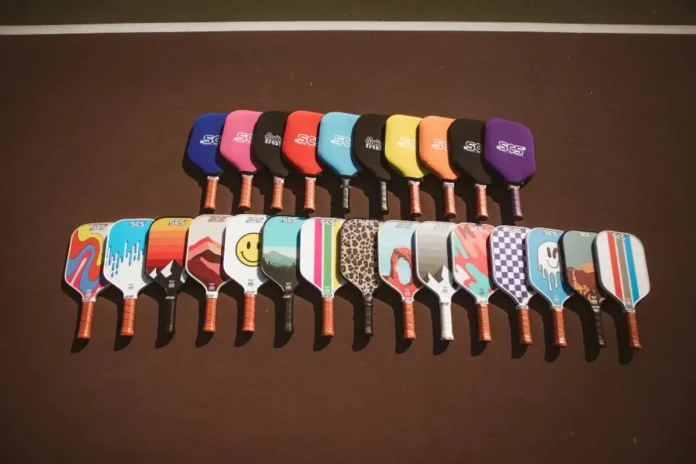Best pickleball paddle for your style: Not all pickleball paddles are the same, and choosing the wrong one could be hurting your performance, Pickleball Studio shared. Different paddle shapes come with trade-offs that players often do not realize. Understanding the pros and cons of each shape can help players make better decisions on the court.
Paddle Rules Players Should Know
Pickleball paddles must meet strict design rules. According to the official guidelines, the combined length and width of a paddle cannot exceed 24 inches. Also, the maximum paddle length allowed is 17 inches. This forces paddle makers to be creative while staying within these limits. For example, a 17-inch paddle could only be 7 inches wide, while a 16.25-inch paddle could be up to 7.75 inches wide. This directly affects the shapes players use.

Three Main Paddle Shapes Explained
Pickleball Studio explained the three major paddle shapes:
-
Widebody (Standard) Paddles:
Usually 16 inches long and 8 inches wide.
Some call anything wider than 8 inches a “widebody,” though many players use “standard” and “widebody” interchangeably. -
Elongated Paddles:
Around 16.5 inches long and 7.5 inches wide.
Some models go up to the full 17 inches for more reach. -
Hybrid Paddles:
Typically about 16.25 inches long and 7.75 inches wide.
While unusual dimensions exist, most paddles fit close to these styles.
Choosing the Right Paddle for Your Style
Pickleball Studio said the best paddle depends on playing style, goals, and physical strengths.
Elongated Paddles: Pros and Cons
Pros:
-
Extra Reach: Players can cover more court space easily.
-
Added Power: Longer shape provides more leverage.
-
Longer Handles: Some have handles over 6 inches, good for two-handed backhands.
Cons:
-
Smaller, Higher Sweet Spot: Demands better accuracy.
-
Less Maneuverability: Slower swings, especially at the net.
Best for:
-
Former tennis players.
-
Singles players who value reach and power.
Widebody (Standard) Paddles: Pros and Cons
Pros:
-
Huge Sweet Spot: Forgiving for newer players.
-
Quick Hands: Helps with fast exchanges at the net.
-
Stable: Good for resets and defense.
Cons:
-
Shorter Reach: Requires quicker footwork.
Best for:
-
Defensive players.
-
Table tennis players.
-
Players who value fast reactions.
Note: Widebody paddles used to have short handles, but many now offer handles from 5.25 to 5.6 inches, helping two-handed players.
Hybrid Paddles: Pros and Cons
Pros:
-
Balanced Feel: Mix of reach, sweet spot, and hand speed.
-
Better Stability: Wider face improves forgiveness.
-
Customizable Weight: Easy to add lead tape without making it heavy.
Cons:
-
Jack of All Trades: No clear specialty.
Best for:
-
Players needing extra reach without losing quick hands.
-
Amateurs wanting a forgiving paddle without extreme shapes.
Final Advice for Players
Pickleball Studio recommends:
-
Newer or defensive players should start with widebody paddles.
-
Former tennis players or advanced players may prefer elongated paddles.
-
Doubles players might like hybrids for their balance of speed and reach.
The Studio also noted that pickleball favors quick hands, smart resets, and adaptability more than just raw power.
At the amateur level, the bigger sweet spot and faster hands of widebody paddles often outweigh the extra reach of elongated ones.
“Former tennis players often hit higher on the paddle face out of habit. On a widebody, that means your shots might feel off until you adjust — it’s not the paddle’s fault!”
News in Brief: Best pickleball paddle for your style
Pickleball Studio explained that paddle shapes affect player performance more than most realize. Different styles offer trade-offs between reach, power, and control. Widebody, elongated, and hybrid paddles each suit different needs. Choosing the right paddle based on play style can improve success on the court.
ALSO READ: Meet the Brothers Behind the Rapid Growth of an Innovative Pickleball Paddle Company

